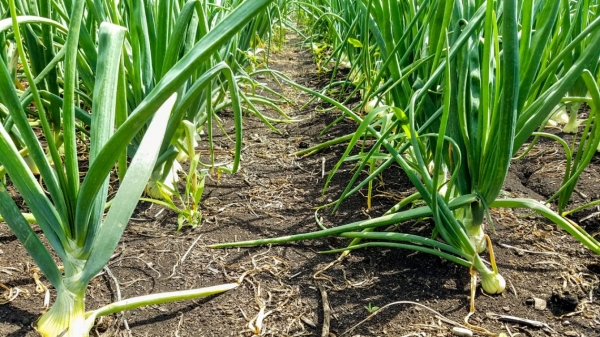A new stud showed that by following action thresholds to determine when to apply insecticides to control onion thrips, farmers made 2.3 fewer applications per season while maintaining yields and bulb size.
A surprise finding from new research on controlling pests and disease in New York commercial onion fields will enable the state’s producers to cut their use of synthetic chemicals without sacrificing yield.
The study, conducted by scientists at Cornell AgriTech and recently published in the journal Agronomy on May 28, showed that by following action thresholds to determine when to apply insecticides to control onion thrips – a major annual pest – farmers made 2.3 fewer applications per season while maintaining yields and bulb size. Action threshold is the density of the pest in a crop that requires a control measure to prevent the population from increasing to a level that will cause economic loss.
The results of more than three years of field trials also showed that farmers could use 50 to 100% less fertilizer without reducing yields.
“Plots with no fertilizer had no difference [compared to plots with full and half amounts],” said Max Torrey ’13, whose 12th generation family farm in Elba, New York was a trial site for the study. “People were skeptical, but this evidence gives us a lot more confidence in what we need to use.”
Continue reading at Cornell University
Image via Cornell University






